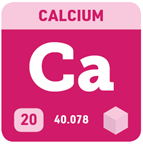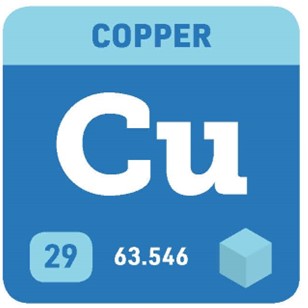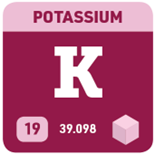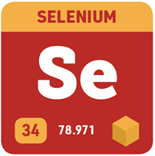It’s National Chemistry Week! To celebrate, we’re looking back at a few recent blog posts highlighting elements important for human health and scientific research. Check out the posts and tell us what your favorite element is in the comments section!
 Credit: Adapted from Compound Interest. CC BY-NC-ND 4.0.
Credit: Adapted from Compound Interest. CC BY-NC-ND 4.0.
Got Calcium?
Calcium is the most abundant mineral in our bodies. It’s essential for lots of important functions—including keeping bones strong and allowing muscles to move. Even clicking on this post to learn more about its many roles requires calcium!
 Credit: Adapted from Compound Interest. CC BY-NC-ND 4.0.
Credit: Adapted from Compound Interest. CC BY-NC-ND 4.0.
Copper Keeps Us Going
Copper plays a crucial role in keeping our bodies functioning. It’s a cofactor to many enzymes, called cuproenzymes, that catalyze a wide range of important reactions like making connective tissue, red blood cells, neurotransmitters, skin pigment, and more! And in some mollusks and other organisms, it’s responsible for the blue color of their blood.
 Credit: Adapted from Compound Interest. CC BY-NC-ND 4.0.
Credit: Adapted from Compound Interest. CC BY-NC-ND 4.0.
Manganese: The Magical Element?
Manganese is an important element that serves as a cofactor for enzymes involved in metabolism, antioxidation, and other processes in our bodies. It’s aptly named after the Greek word for magic, and some mysteries surrounding its role in the body still exist today.
 Credit: Adapted from Compound Interest. CC BY-NC-ND 4.0.
Credit: Adapted from Compound Interest. CC BY-NC-ND 4.0.
Pump Up the Potassium
Did you know that despite being in a variety of foods including bananas, potassium is an essential element that many Americans don’t consume enough of? It’s the primary regulator of the pressure and volume inside cells, and it’s important for nerve transmission, muscle contraction, and more.
 Credit: Adapted from Compound Interest. CC BY-NC-ND 4.0.
Credit: Adapted from Compound Interest. CC BY-NC-ND 4.0.
So Much to Do, So Little Selenium Needed
Selenium is an essential trace element. Our bodies need it, but they don’t need much—too little or too much can be harmful. In our bodies, selenium is often found in antioxidant enzymes that help protect us from oxidative damage.
Check out our other posts on elements.







